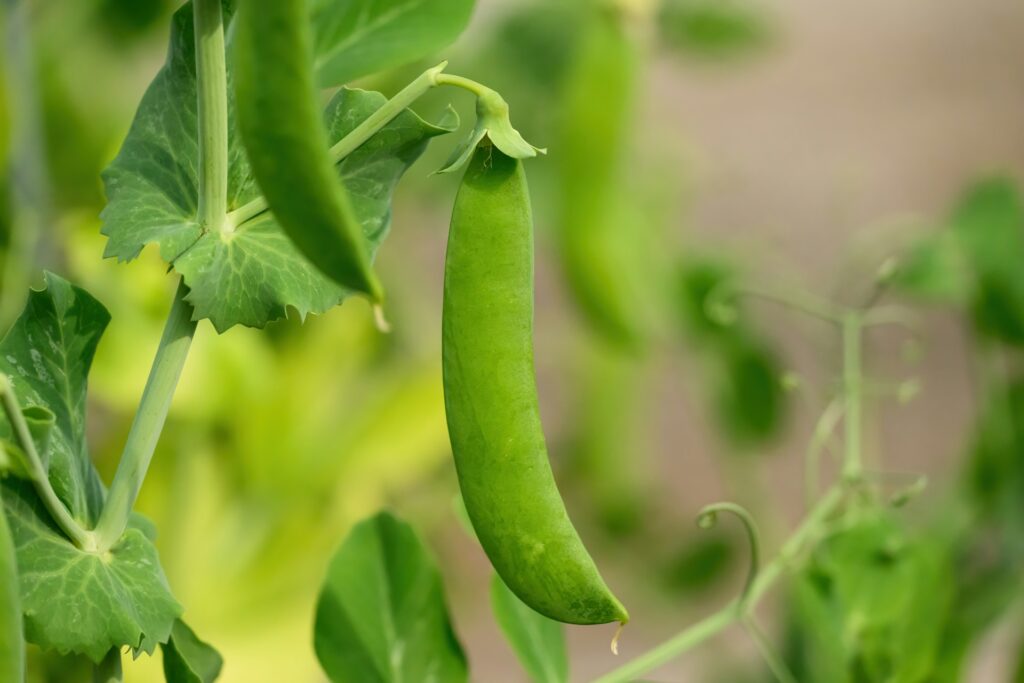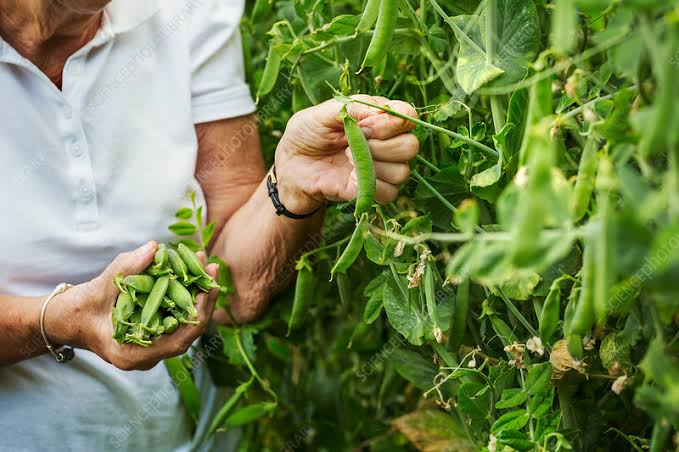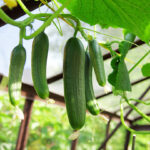In the quest for agricultural innovation, introducing superior pea varieties has marked a significant milestone for farmers across India. The GS-10 pea variety, in particular, has emerged as a game-changer, offering promising avenues to elevate green pea yields. This pea seed, known for its robustness and high yield potential, has not only captivated the interest of the farming community but also piqued the curiosity of agri-business stakeholders. Understanding the characteristics, benefits, and cultivation techniques of this garden pea variety is essential for anyone looking to revolutionize their green pea production.
This article will dig into the GS10 pea variety, from its genetic makeup which promotes abundant lateral branches, to expert planting and cultivation tips. Maintenance practices that are crucial for achieving high yields will be outlined, alongside guidance for efficient harvesting and post-harvest handling. Additionally, the economic benefits of choosing GS10 pea seeds, including considerations like pea seeds price, will be thoroughly examined. Offering a comprehensive overview, this article aims to equip farmers with the knowledge and tools needed to maximize their green peas seeds investment and harness the full potential of this innovative pea variety.
Understanding the GS-10 Pea Variety
What is GS10 Pea Variety?
The GS10 pea variety is distinguished by its genetic composition which encourages the growth of lateral branches, significantly enhancing its yield capabilities. This variety is specifically developed to thrive in the diverse climatic conditions of India, making it a robust choice for local farmers.
History and Development
Originally developed through a meticulous selection process aimed at improving resilience and yield, the GS10 pea variety represents a breakthrough in agricultural breeding. Researchers focused on genetic traits that would enable the plant to maximize productivity even under variable environmental stresses.
Key Features and Benefits
One of the standout features of the GS10 pea variety is its exceptional resistance to common pea diseases, which ensures reliable yields year after year. Additionally, this variety boasts a shorter maturity cycle, allowing farmers to harvest crops quicker compared to traditional pea varieties. The increased density of lateral branches not only maximizes space but also significantly boosts the overall yield, making it an economically beneficial option for growers. The GS10 variety’s adaptability to a range of soil types and weather conditions further underscores its value, providing farmers with a versatile and dependable crop choice.
Planting and Cultivation Tips

Ideal Soil Conditions
The GS10 pea variety thrives in a range of soil types, from sandy loam to clay soils. Optimal growth is observed in well-drained soils with a pH range of 6 to 7.5. It is crucial to avoid waterlogged conditions, and for acidic soils, liming is recommended to adjust the pH balance.
Optimal Planting Season
To maximize yields, it is advisable to complete sowing between the end of October and the middle of November. Delaying sowing can result in significant yield losses. For markets that demand early pea availability, some growers opt to sow in the second fortnight of October.
Row and Plant Spacing
Proper spacing is critical for the GS10 variety to achieve optimal growth and yield. Early varieties should be spaced at 30cm x 5cm, while later varieties require more room, typically 45-60cm x 10cm. Seeds should be sown at a depth of 2-3cm using a seed cum fertilizer drill on ridges, which should be approximately 60 cm wide.
Maintenance for High Yields
To achieve high yields with the GS10 pea, proper maintenance is crucial. Regular watering, timely fertilization, and effective pest control are essential practices. Consistent monitoring and adjusting techniques as needed can significantly enhance your green pea production, ensuring a bountiful harvest.
Watering and Irrigation
For the GS10 pea variety, maintaining optimal soil moisture is crucial. It is recommended to irrigate the crops once a week to ensure the soil remains well-drained yet sufficiently moist.
Pest and Disease Management
Effective pest and disease management is vital for maintaining high yields. For pests like the pod borer, spraying Azadirachtin 0.03% (300ppm) thrice at fortnightly intervals is advised. Additionally, to combat aphids, treatments such as Methyl demeton 25 EC or Dimethoate 30 EC at a dosage of 1 ml/l of water are effective. Diseases such as powdery mildew can be managed by spraying wettable sulphur at 2 g/l or dinocap at 1 ml/l, or by dusting with sulphur at 25 kg/ha thrice at 15-day intervals.
Nutrient Requirements
To support the vigorous growth and high yield potential of the GS10 pea variety, a balanced nutrient management plan is essential. Apply FYM at 20 t/ha along with 60 kg N, 80 kg P, and 70 kg K per hectare as basal and an additional 60 kg N per hectare 30 days after sowing. This comprehensive fertilization strategy ensures that the plants receive the necessary nutrients at critical growth stages.
Harvesting and Post-Harvest Handling
When to Harvest
The GS10 pea variety should be harvested early and often to ensure the highest quality. The first picking typically occurs 60-65 days after sowing, with the plant producing 3-4 pickings throughout the growing season. Harvesting should be done as soon as the peas are big enough to eat, especially for vining types, to maintain sugar levels and prevent them from turning into starch.
Proper Harvesting Techniques
To harvest the GS10 pea variety, it is essential to use clean pruners to cut the stem just above the pod. Starting from the base of the plant and working upwards ensures that all ready pods are collected without damaging the vine. The GS10 pea plant is medium tall with well-spread lateral branches, typically bearing 9-10 seeds per pod. This structure supports efficient harvesting and maximizes yield.
Storage Tips
Post-harvest, the GS10 peas should be stored under specific conditions to maintain freshness. Unshelled peas can be kept for up to two weeks at 0°C with 90-95% relative humidity. For longer storage, peas should be frozen and can be kept for up to a year at temperatures between -23 to -18°C in gas-tight packaging. It is crucial to avoid washing the pods before storage to prevent moisture from turning the sugars into starch, which can degrade the quality.
Economic Benefits of GS10 Pea Variety
Market Demand and Pricing
The GS10 pea variety commands a higher price in the market yard due to its superior quality and yield. This variety is not only appreciated for its sweet taste and tender pods but also for its economic advantages, including fetching higher prices compared to other varieties. The pricing of GS10 pea seeds reflects this value, with costs ranging from ₹120 to ₹350 per kilogram depending on the supplier.
ROI and Profitability
Investing in the GS10 pea variety proves economically beneficial for farmers due to its potential yield of approximately 8 to 12 tons per hectare. This high yield potential directly correlates with enhanced profitability and a favorable return on investment (ROI), making it a lucrative option for those involved in pea cultivation.
Success Stories from Farmers
Farmers who have chosen the GS10 pea variety have shared positive reviews, noting its exceptional performance and reliability. Verified farmers like Rajesh and Jai have praised GS10 for being a genuine and superior product, further solidifying its reputation among the farming community. Another farmer, Salim, highlighted the distinct advantages of GS10 over other varieties, emphasizing its significant contribution to his agricultural success. These testimonials underscore the economic benefits and satisfaction derived from cultivating the GS10 pea variety.
Conclusion
Throughout the discussion on the GS10 pea variety, it has become evident that this innovative pea seed stands out as a cornerstone in redefining green pea production in India. Its unique genetic makeup favoring abundant lateral branches, coupled with its resilience against common pea diseases and adaptability to various climatic and soil conditions, underscores its potential to significantly enhance yields. Moreover, the detailed exploration into planting, cultivation, and maintenance practices prepares farmers to exploit the full potential of GS10, maximizing their investment in green pea cultivation.
As the GS10 variety carves a niche for itself in the market, its economic benefits, including higher returns on investment and favorable market pricing, paint a promising picture for its adopters. The shared experiences of farmers like Rajesh, Jai, and Salim, who have witnessed firsthand the transformative impacts of switching to GS10, further attest to its viability and superior performance. Embracing GS10 not only represents a step forward in agricultural innovation but also signals a move towards more sustainable, profitable farming practices in India.


